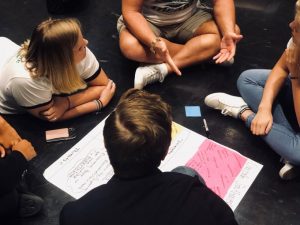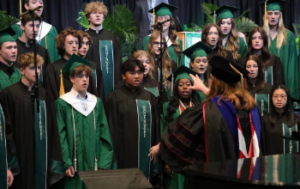The 5 key practices to help improve the remote learning experience are:
Turning On the Camera During Zoom Sessions
Use of the camera by students increases the connection with the classroom and demonstrates increased engagement in learning. Seeing non-verbal cues such as smiles and other facial expressions on the screen helps convey emotions to the teachers and allows them to connect with how students are doing. It also helped students feel more comfortable asking questions and made many feel more connected to their peers in the remote classroom space.
Creating a Personal Work Environment
Establishing a formal learning space helps students to be in the correct mindset to participate. This might include sitting at a table or desk and having the area properly lit. This also means having materials nearby and taking advantage of opportunities to participate by answering questions, offering feedback or commenting in the chat. Establishing a personal work space helps keep you in “school mode” and ready for full engagement as a learner.
Avoiding Distractions
Distancing oneself from distracting items, including your phone, TV, video games, etc. is key to improving concentration and focus. There are a lot of things available to distract all of us when working remotely. If you can, move to spaces away from tvs or video games so that you can set-up your personal work space, it will help you stay focused on the work at hand. Staying away from distracting devices also helps show your parents that they don’t need to take the power cord to the game console or the tv away while you are at home during the day. Doing what it takes to avoid distractions helps to create good habits that will help you be successful in future learning environments when you may find that you have to take on more personal responsibility for your own learning.
Participating in Class
Just like during in-person instruction, engagement in learning goes beyond simple attendance. Responding to teacher prompts and questions, through chat, microphone, or video, provides the teacher with an opportunity to correct misunderstandings and to affirm learning.
Requesting Help
Seeking help from the teacher when directions are unclear or things don’t make sense can seem a little more difficult through Zoom. While speaking up or typing a question in chat is the most direct route, some students may prefer some anonymity. In this case, emailing the teacher or asking to set up a Zoom meeting before or after school are good alternatives to receive help in a more private setting.
If you find yourself struggling to understand the content, the instructions or are in need of any additional help as a remote learner, the most important thing you can do is reach out and ask for help. Please don’t hesitate to reach out to your teachers, counselors or administrator to get some help. No one learns alone, we are all here to help everyone navigate these circumstances together!






